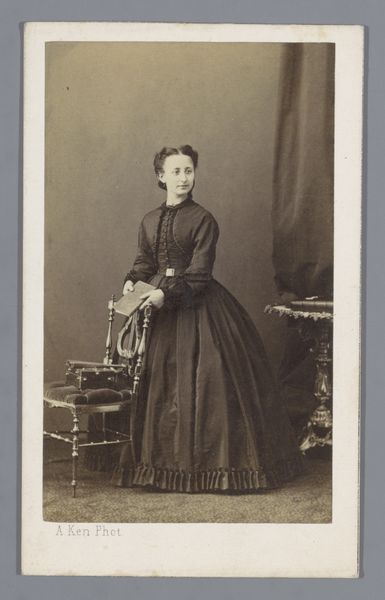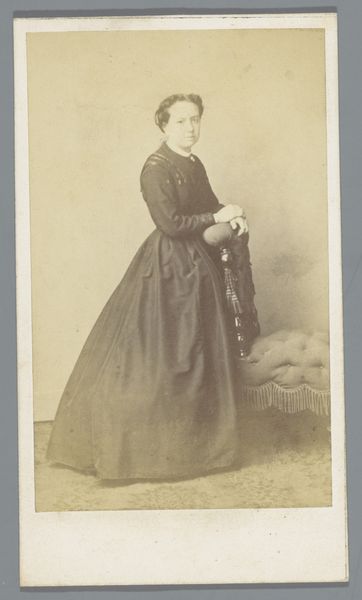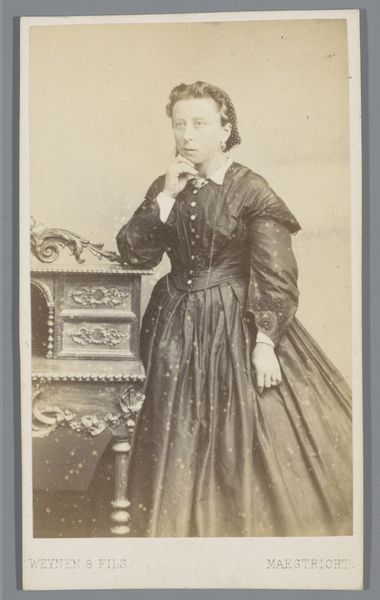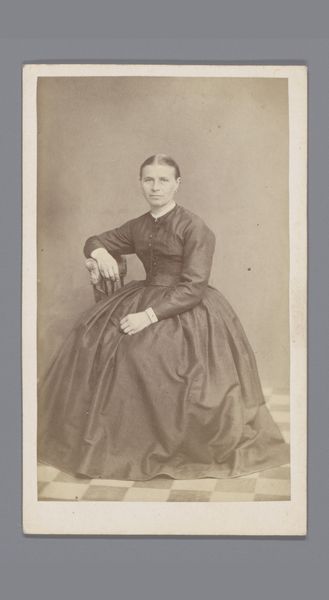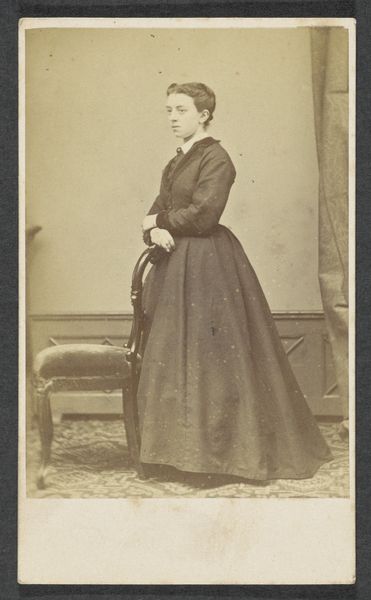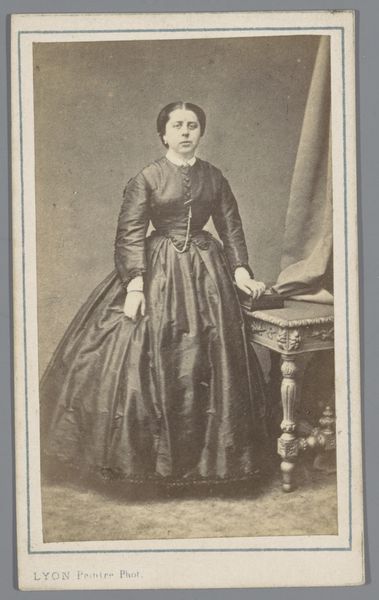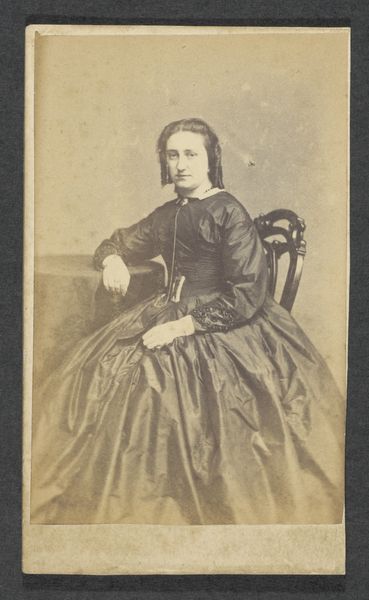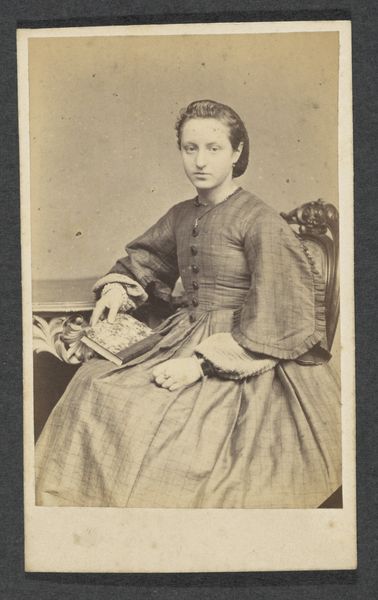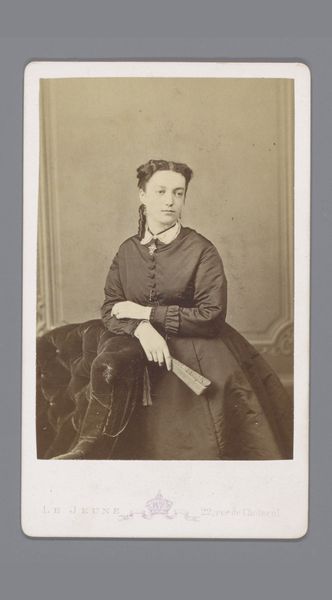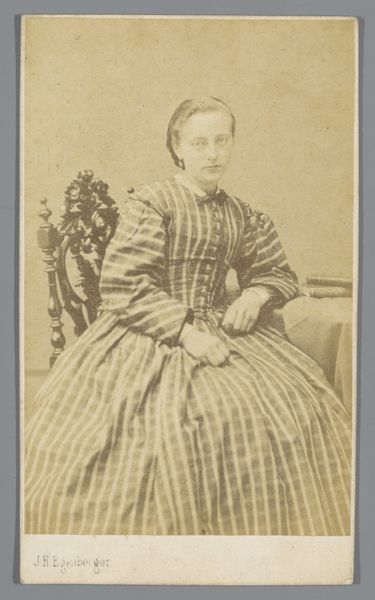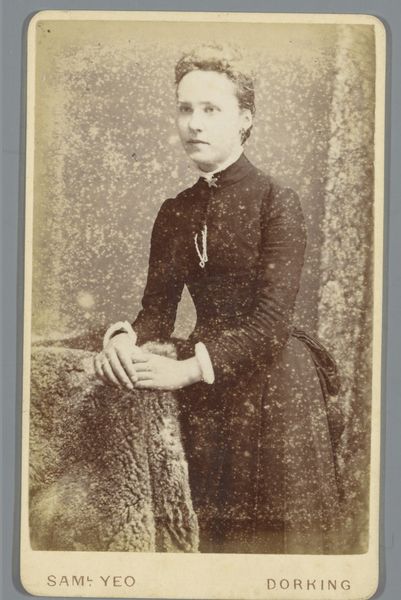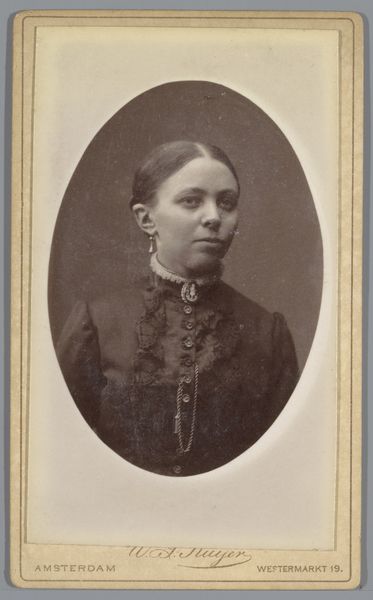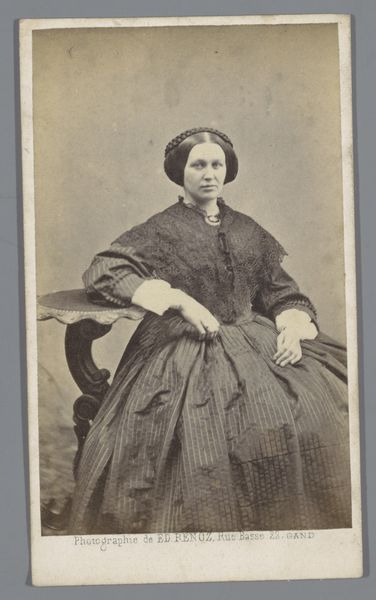
Dimensions: height 97 mm, width 60 mm
Copyright: Rijks Museum: Open Domain
Editor: So this gelatin silver print from 1870, "Portrait of a Girl, referred to as Emy Lauers," it’s a very sweet but melancholic photograph. What strikes me is the formality, and how it makes you consider this girl's position and what’s on show. What do you make of it? Curator: Indeed. This piece gives us a window into the conventions of portraiture and its public role during the late 19th century. Looking at this image through a historical lens, how does it reinforce or challenge the conventional roles of women in society as they were publicly projected through photographs and other artworks? Editor: That’s interesting, I hadn't considered the conventions of the time! To me she just looks very demure. Is the 'romanticism' tag relevant here in that light, perhaps referring to the aesthetics around female purity? Curator: It's likely a confluence of aesthetic and social ideals. Romanticism in art often sought to capture emotional intensity and beauty, which intertwined with societal expectations for women. Consider how the photographer uses soft lighting and poses to enhance her innocence. Does that aesthetic then shape how her ‘purity’ would be considered publicly, by the art-viewing public? Editor: It absolutely does. You’re right to highlight that the aesthetic itself becomes a tool in projecting certain societal values. Is it fair to read social standing into photographic portraits of this era? Curator: Absolutely. Access to portraiture, particularly photography, was often linked to social status. The simple fact this was commissioned indicates a degree of privilege. Further study could uncover Lauers’s place in society by analysing costume and setting within the portrait’s context and the artist’s social connections. Editor: Thank you, that makes it much more insightful. Seeing the image in light of those historical and societal elements really transforms how I understand the artwork, it adds layers of meaning that I had totally missed before. Curator: Exactly! This photograph serves as a public statement, influenced by its time, by the medium and romantic aesthetics. Looking at its reception offers us a lens through which we can observe power dynamics and values encoded within photographic art.
Comments
No comments
Be the first to comment and join the conversation on the ultimate creative platform.
